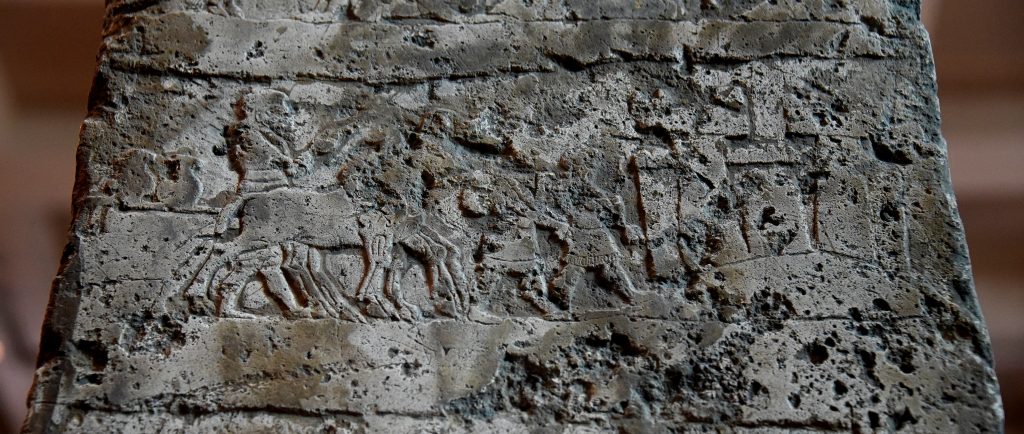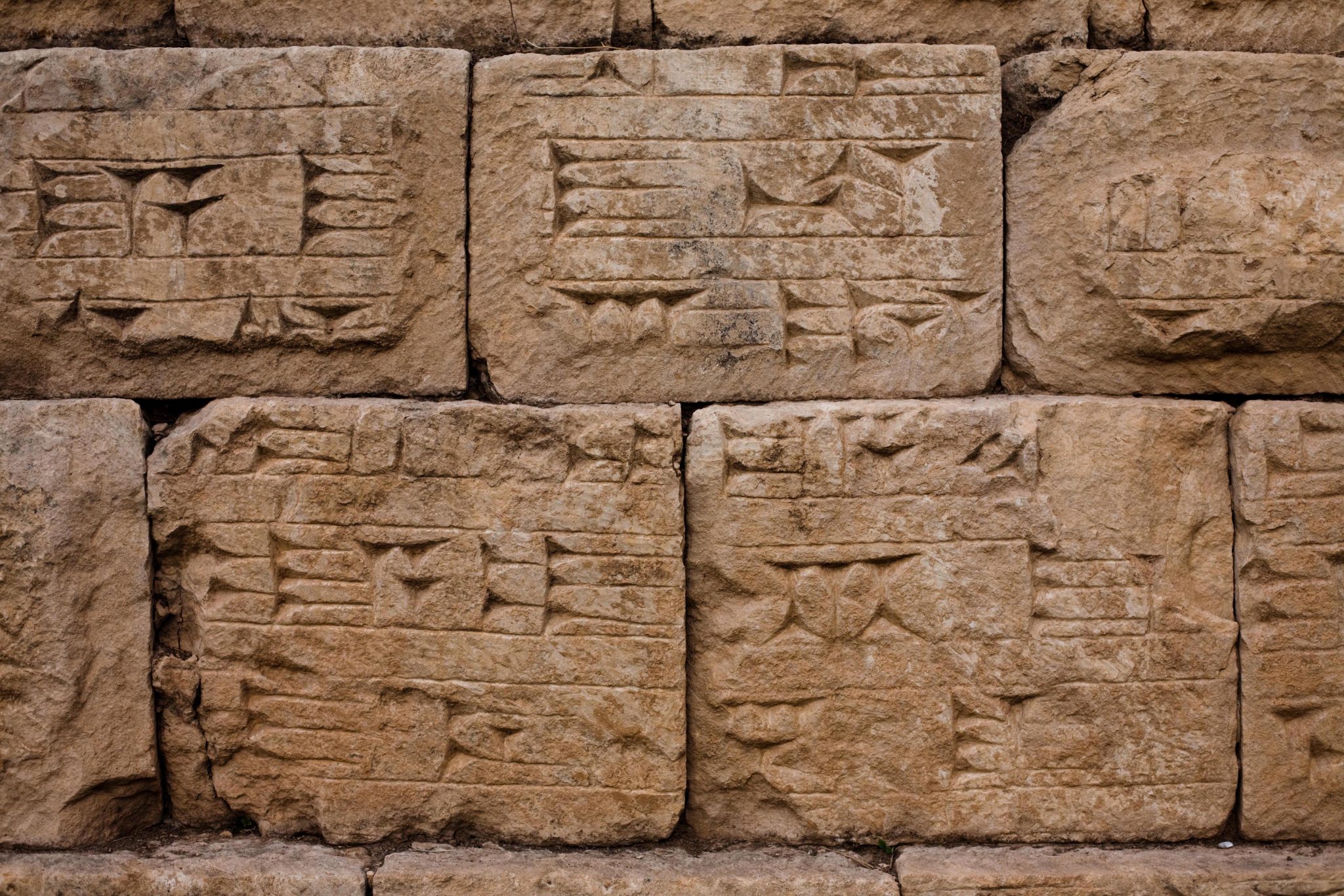The White Obelisk of Ashurnasirpal I
In July 1853, Hormuzd Rassam was excavating an area at the ruins of the mound of Kuyunjik (Nineveh, Mesopotamia, modern-day Mosul Governorate, Iraq), one of the most important cities in the heartland of the Assyrian Empire. The area was an open space between the outer court of the palace of the Assyrian King Sennacherib and the Ishtar Temple. About 200 feet northeast of the palace, Rassam dug a trench that went down about 15 feet from the surface of the mound. At this point, his workmen found a large, 4-sided, monolith pillar; it was an obelisk, somewhat whitish in colour. The obelisk was lying on it sides. An artist, C. D. Hodder, who accompanied Rassam on his expedition, made drawings of the 4 sides of the obelisk in situ. It is now known as the White Obelisk of Ashurnasirpal I and housed in the British Museum.


